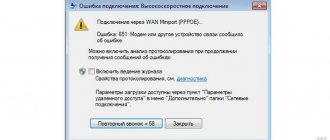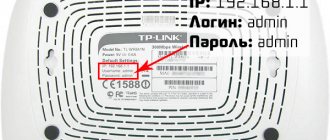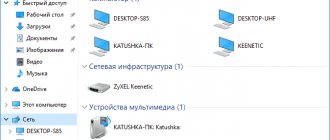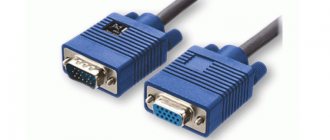Cellular.
Also on topic:
PHONE
The most common type of mobile communication today is cellular communication. Cellular communication services are provided to subscribers by operator companies.
A network of base stations provides wireless communication to a cell phone.
Also on topic:
INTERNET
Each station provides access to the network in a limited area, the area and configuration of which depends on the terrain and other parameters. The overlapping coverage areas create a honeycomb-like structure; The term “cellular communication” comes from this image. When a subscriber moves, his phone is served by one or another base station, and the switching (cell change) occurs automatically, completely unnoticed by the subscriber, and does not in any way affect the quality of communication. This approach allows, using low-power radio signals, to cover large areas with a mobile communications network, which provides this type of communication, in addition to efficiency, also a high level of environmental friendliness.
Also on topic:
ELECTRONICS INDUSTRY
The operator company not only technically provides mobile communications, but also enters into economic relationships with subscribers who purchase from it a certain set of basic and additional services. Since there are quite a lot of types of services, prices for them are combined into sets called tariff plans. The cost of services provided to each subscriber is calculated by the billing system (a hardware and software system that keeps records of the services provided to the subscriber).
The operator's billing system interacts with similar systems of other companies, for example, those providing roaming services to the subscriber (the ability to use mobile communications in other cities and countries). The subscriber makes all mutual payments for mobile communications, including in roaming, with his operator, which is a single settlement center for him.
Roaming is access to mobile communication services outside the coverage area of the “home” operator’s network with which the subscriber has a contract.
While roaming, the subscriber usually retains his phone number and continues to use his cell phone, making and receiving calls in the same way as on the home network. All actions necessary for this, including inter-operator traffic exchange and attracting the resources of other communication companies (for example, providing transcontinental communications) as necessary, are carried out automatically and do not require additional actions from the subscriber. If the home and guest networks provide communication services in different standards, roaming is still possible: the subscriber can be given a different device for the duration of the trip, while maintaining his phone number and automatically routing calls.
Fourth generation of cellular communications
At the end of the 2000s, iPhones and Androids began to appear. These smartphones differed from their predecessors in their large LCD display. Now no one wanted to view modest WAP pages. From now on, the built-in components were quite enough for the browser to display a full page without any problems, no matter how heavy it was. But it requires high speed to load it quickly. Only a completely new standard could provide it. Active popularization of 4G, or IMT-Advanced, began in March 2008.
The result of the scientists’ work was two standards: WiMAX and LTE. Now you yourself know which of them is most widespread. The introduction of LTE has made it possible to significantly increase the capacity of each cell, although its coverage area has decreased. Now the minimum data transfer speed was 100 Mbit/s, which is enough for most average smartphone owners. Subsequently, this parameter increased even more. This happened due to the implementation of LTE-Advanced technology. Depending on the category of technology supported by the device, speeds of 400 Mbit/s or even 1 Gbit/s can be achieved!
Unlike previous generations, the LTE standard was originally intended only for packet data transmission. But over time, digital voice transmission also became available - VoLTE technology is responsible for this. The sound quality is much higher than when talking via 2G or 3G networks. However, not all smartphones still support this technology.
History of cellular communications.
Work on the creation of civilian mobile communication systems began in the 1970s. By this time, the development of conventional telephone networks in European countries had reached such a level that the next step in the evolution of communications could only be the availability of telephone communications anywhere and everywhere.
Networks based on the first civilian cellular standard, NMT-450, appeared in 1981. Although the name of the standard is an abbreviation of the words Nordic Mobile Telephony (“mobile telephony of the Nordic countries”), the first cellular network on the planet was deployed in Saudi Arabia. In Sweden, Norway, Finland (and other Nordic countries), NMT networks went live several months later.
Two years later - in 1983 - the first network of the AMPS (Advanced Mobile Phone Service) standard, created at the Bell Laboratories research center, was launched in the United States.
The NMT and AMPS standards, which are generally considered to be the first generation of cellular communication systems, provided for data transmission in analog form, which did not allow for the proper level of noise immunity and protection from unauthorized connections. Subsequently, they developed modifications improved through the use of digital technologies, for example, DAMPS (the first letter of the abbreviation owes its appearance to the word Digital).
The second generation standards (the so-called 2G) - GSM, IS-95, IMT-MC-450, etc., initially created on the basis of digital technologies, exceeded the first generation standards in sound quality and security, and also, as it turned out later, in the underlying to the standard of development potential.
Already in 1982, the European Conference of Postal and Telecommunications Administrations (CEPT) created a group to develop a common standard for digital cellular communications. The brainchild of this group was GSM (Global System for Mobile Communications).
The first GSM network was launched in Germany in 1992. Today, GSM is the dominant cellular communication standard both in Russia and throughout the world. In 2004, in our country, GSM networks served over 90% of cellular subscribers; in the world GSM was used by 72% of subscribers.
Several frequency ranges are allocated for the operation of GSM standard equipment - they are indicated by numbers in the names. In the European region, GSM 900 and GSM 1800 are mainly used, in America - GSM 950 and GSM 1900 (at the time the standard was approved in the USA, the “European” frequencies there were occupied by other services).
The popularity of the GSM standard was ensured by its significant features for subscribers:
– high quality voice transmission;
– protection from interference, interception and “doubles”;
– availability of a large number of additional services;
– the ability, in the presence of “add-ons” (such as GPRS, EDGE, etc.), to provide data transmission at high speeds;
– presence on the market of a large number of telephones operating in GSM networks;
– simplicity of the procedure for changing one device to another.
In the process of development, GSM cellular networks have acquired the ability to expand due to some “add-ons” over the existing infrastructure, providing high-speed data transfer. GSM networks supporting GPRS (General Packet Radio Service) are called 2.5G, and GSM networks supporting EDGE (Enhanced Data rates for Global Evolution) are sometimes called 2.75G networks.
In the late 1990s, third generation (3G) networks appeared in Japan and South Korea. The main difference between the standards on which 3G networks are built and their predecessors is the expanded capabilities of high-speed data transmission, which allows the implementation of new services in such networks, in particular, video telephony. In 2002–2003, the first commercial 3G networks began operating in some Western European countries.
Although 3G networks currently exist only in a number of regions of the world, work is already underway in the engineering laboratories of the largest companies to create fourth-generation cellular communication standards. At the forefront of this is not only a further increase in data transmission speed, but also an increase in the efficiency of using the capacity of frequency bands allocated for mobile communications, so that a large number of subscribers located in a limited area can access services (which is especially important for megacities) .
First generation of cellular communications
Nowadays the very first generation of cellular communications is commonly called 1G. But during the years of operation of these networks, no one suspected such a concept; then many people did not think that in the near future cellular communications would become completely different. So what was the first generation like?
In fact, it was an analog connection. It was launched by AT&T, and the first call took place on April 3, 1973 - it was made by Martin Cooper, who was the head of Motorola's mobile division. As with landline analog communications, theoretically a cell phone could be used as a modem. But only some millionaire could decide to do this, because a minute of conversation in those days cost a lot of money.
As with subsequent generations, 1G is just a name that combines several different standards. In Canada, the USA, Australia, and South and Central America, the AMPS standard was used. In Scandinavian countries and some countries, the NMT standard and its variations have become widespread. Well, in Italy, Spain, England, Austria, Ireland and Japan, TACS standard cellular equipment was used. And these are just three of the most popular network implementation options! All these standards were completely incompatible with each other. Therefore, a Briton who came to America could not talk on his own telephone. Different standards differed from each other not only in frequency range, but also in cell radius, transmitter power, switching time at the cell boundary, and signal-to-noise ratio. You can find out more about all the specifications in the attached plate.
First-generation cellular communications did not immediately become available to ordinary people. For the first decade, some companies were engaged only in experiments. Commercial implementation occurred only in 1984. It quickly became clear that analog cellular communication has a number of disadvantages. Firstly, each cell had a small capacity - when a large number of subscribers connected to it, serious problems began. Secondly, the signal quality was far from ideal, especially if the subscriber was not on the street, but in a building. Europeans were the first to think about these problems. They began to develop digital communications.
Other mobile communication systems.
In addition to cellular communications, today there are other civil communication systems that also provide mobile communications via radio channels, but are built on different technical principles and are aimed at other subscriber terminals. They are less common than cellular communications, but are used when using cellular phones is difficult, impossible or economically unviable.
The DECT microcellular communication standard, which is used for communications in a limited area, is becoming increasingly popular. A DECT base station is capable of providing handsets (up to 8 of them can be serviced simultaneously) with each other, call forwarding, and access to the public telephone network. The potential of the DECT standard makes it possible to provide mobile communications within urban neighborhoods, individual companies or apartments. They turn out to be optimal in regions with low-rise buildings, whose subscribers only need voice communications and can do without mobile data transmission and other additional services.
In satellite telephony, base stations are located on satellites in low-Earth orbits. Satellites provide communications where the deployment of a conventional cellular network is impossible or unprofitable (at sea, in vast sparsely populated areas of tundra, deserts, etc.).
Trunking networks, which provide subscriber terminals (they are usually called not telephones, but radio stations) with communication within a certain territory, are systems of base stations (repeaters) that transmit radio signals from one terminal to another when they are significantly removed from each other. Since trunking networks usually provide communication to employees of departments (Ministry of Internal Affairs, Ministry of Emergency Situations, Ambulance, etc.) or at large technological sites (along highways, at construction sites, on the territory of factories, etc.), trunking terminals do not have entertainment capabilities and design delights in decoration.
Wearable radios communicate with each other directly, without intermediate communication systems. Mobile communications of this type are preferred by both government (police, fire brigade, etc.) and departmental structures (for communications within a warehouse complex, parking lot or construction site), and private individuals (mushroom pickers, fishermen or tourists), in situations , when it is easier and cheaper to use pocket radios to communicate with each other than cell phones (for example, in remote areas where there is no cellular network coverage).
Paging communication ensures the receipt of short messages to subscriber terminals - pagers. Currently, paging communications are practically not used in civil communications; due to their limitations, they are pushed into the field of highly specialized solutions (for example, they are used to notify personnel in large medical institutions, transmit data to electronic information boards, etc.).
Since 2004, a new subtype of mobile communication has become increasingly widespread, providing the possibility of high-speed data transmission over a radio channel (in most cases, the Wi-Fi protocol is used for this). Areas with Wi-Fi coverage available for public use (paid or free) are called hotspots. In this case, the subscriber terminals are computers - both laptops and PDAs. They can also provide two-way voice communication over the Internet, but this feature is used extremely rarely; the connection is mainly used to access the most common Internet services - email, websites, instant messaging systems (for example, ICQ), etc. .
Story
The first use of mobile telephone radio in the United States dates back to 1921: Detroit police used one-way dispatch communications in the 2 MHz band to transmit information from a central transmitter to vehicle-mounted receivers. In 1933, the NYPD began using a two-way mobile telephone radio system, also in the 2 MHz band. In 1934, the US Federal Communications Commission allocated 4 channels for telephone radio communications in the range of 30-40 MHz, and in 1940 about 10 thousand police vehicles were already using telephone radio communications. All of these systems used amplitude modulation. Frequency modulation began to be used in 1940 and by 1946 it had completely replaced amplitude modulation. The first public mobile radiotelephone appeared in 1946 (St. Louis, USA; Bell Telephone Laboratories), it used the 150 MHz band. In 1955, an 11-channel system began operating in the 150 MHz range, and in 1956, a 12-channel system in the 450 MHz range. Both of these systems were simplex and used manual switching. Automatic duplex systems began operating in 1964 (150 MHz) and 1969 (450 MHz), respectively.
In the USSR in 1957, Moscow engineer L.I. Kupriyanovich created a prototype of a portable automatic duplex mobile radiotelephone LK-1 and a base station for it. The mobile radiotelephone weighed about three kilograms and had a range of 20-30 km. In 1958, Kupriyanovich created improved models of the device, weighing 0.5 kg and the size of a cigarette box. In the 1960s Hristo Bochvarov in Bulgaria demonstrates his prototype of a pocket mobile radiotelephone. At the Interorgtekhnika-66 exhibition, Bulgaria is presenting a kit for organizing local mobile communications from pocket mobile phones RAT-0.5 and ATRT-0.5 and a base station RATC-10, providing connection for 10 subscribers.
At the end of the 50s, the Voronezh Scientific Research Institute of Communications developed the world's first fully automatic mobile communication system, Altai [1], which was put into trial operation in 1963. The Altai system initially operated at a frequency of 150 MHz. In 1970, the Altai system operated in 30 cities of the USSR and the 330 MHz range was allocated for it. The principle of communication was this: the city was served by one base station. The equipment was usually installed on one of the tallest buildings in the city. Depending on the height, topography and number of floors of the building, a stable signal in the city could be within a radius of up to 50 - 60 km, and in some places up to 100 km around the base station. Within this radius it was possible to make calls, both from “Altai” to “Altai”, and to city telephone numbers, and even intercity and abroad.
In a similar way, with natural differences and on a smaller scale, the situation developed in other countries. Thus, in Norway, public telephone radio has been used for maritime mobile communications since 1931; in 1955 there were 27 coast radio stations in the country. Land mobile communications began to develop after the Second World War in the form of private, manually switched networks. Thus, by 1970, mobile telephone radio communications, on the one hand, had already become quite widespread, but on the other, it clearly could not keep up with the rapidly growing needs, with a limited number of channels in strictly defined frequency bands. A solution was found in the form of a cellular communication system, which made it possible to dramatically increase capacity by reusing frequencies in a system with a cellular structure.
Cellular systems
Certain elements of the cellular communication system existed before. In particular, some semblance of a cellular system was used in 1949 in Detroit (USA) by a taxi dispatch service - with the reuse of frequencies in different cells when users manually switched channels at predetermined locations. However, the architecture of what is now known as the cellular communications system was not outlined until the Bell System technical report submitted to the FCC in December 1971. From this time on, the development of cellular communications itself began.
In 1974, the US Federal Communications Commission decided to allocate a frequency band of 40 MHz in the 800 MHz band for cellular communications; in 1986 another 10 MHz was added in the same range. In 1978, tests of the first experimental cellular communication system for 2 thousand subscribers began in Chicago. Therefore, 1978 can be considered the year of the beginning of the practical use of cellular communications. The first automated commercial cellular telephone system was also introduced in Chicago in October 1983 by American Telephone and Telegraph (AT&T). In Canada, cellular communications have been used since 1978, in Japan - since 1979, in northern European countries (Denmark, Norway, Sweden, Finland) - since 1981, in Spain and England - since 1982. As of July 1997 cellular communications operated in more than 140 countries on all continents, serving more than 150 million subscribers.
The first commercially successful cellular network was the Finnish Autoradiopuhelin (ARP) network. This name is translated into Russian as “Car radiotelephone”. Launched in 1971, it reached 100% coverage in Finland in 1978, and in 1986 it had more than 30 thousand subscribers. The network operated at a frequency of 150 MHz, cell size was about 30.
Where is mobile communications going?
In developed regions, the main direction of development of mobile communications for the near future is convergence: providing subscriber terminals with automatic switching from one network to another in order to most effectively use the capabilities of all communication systems. Automatic switching, for example, from GSM to DECT (and vice versa), from satellite to terrestrial communications, and when providing wireless data transmission, will allow automatic switching, for example, between GPRS, EDGE, Wi-Fi and other standards, many of which (for example, WiMAX) are just waiting in the wings.
The place of mobile communications in the global economy.
Communications are the most dynamically developing sector of the world economy. But mobile communications, even compared to other areas of telecom, are developing at a faster pace.
Back in 2003, the total number of mobile phones on the planet exceeded the number of landline devices connected to public wired networks. In some countries, the number of mobile subscribers already exceeded the number of inhabitants in 2004. This means that some people used more than one “mobile”—for example, two cell phones with different carriers, or a voice phone and a wireless modem for mobile Internet access. In addition, more and more wireless communication modules were required to provide technological communications (in these cases, the subscribers are not people, but specialized computers).
Currently, cellular operators provide full coverage of the territory of all economically developed regions of the planet, but the extensive development of networks continues. New base stations are installed to improve reception in places where the existing network for some reason cannot provide stable reception (for example, in long tunnels, in metro areas, etc.). In addition, cellular networks are gradually penetrating into low-income regions. The development of mobile communication technologies, accompanied by a sharp reduction in the cost of equipment and services, makes cellular services accessible to an increasing number of people on the planet.
The production of cell phones is one of the most dynamically developing areas of the high technology industry.
The mobile phone servicing industry is also growing rapidly, offering accessories for personalizing devices: from original calls (ringtones) to key fobs, graphic screensavers, body stickers, replacement panels, cases and cords for wearing the device.
How GSM networks work or brief basics of communication
Almost everyone used a cell phone, but few people thought about how it all works? In this literary opus we will try to consider how communication occurs from the point of view of your telecom operator.
When you dial a number and start calling, well, or someone calls you, your device communicates via radio channel with one of the antennas of the nearest base station.
Each of the base stations contains from one to twelve transceiver antennas, directed in different directions, to provide communication to subscribers from all directions. In professional jargon, antennas are also called “sectors”. You yourself have probably seen them many times - large gray rectangular blocks.
From the antenna, the signal is transmitted via cable directly to the control unit of the base station. The set of sectors and a control block is usually called BS, Base Station, base station . Several base stations, whose antennas serve a specific territory or area of the city, are connected to a special unit - the so-called LAC, Local Area Controller , often simply called a controller . Up to 15 base stations are usually connected to one controller.
In turn, the controllers, of which there may also be several, are connected to the unit itself - MSC, Mobile services Switching Center , more commonly known as a switch . The switch provides access (and input) to city telephone lines, to other cellular operators, and so on.
That is, in the end the whole scheme looks something like this:
Small GSM networks use only one switch; larger ones, serving more than a million subscribers, can use two, three or more MSCs interconnected.
Why such complexity? It would seem that you could simply connect the antennas to the switch - and that’s it, there would be no problems... But it’s not so simple. It's all about one simple English word - handover . This term refers to handover in cellular networks. That is, when you are walking down the street or driving a car (train, bicycle, roller skates, paver...) and at the same time talking on the phone, then in order for the connection not to be interrupted (and it is not interrupted), you need to switch your phone in time from one sector to another, from one BS to another, from one Local Area to another, and so on. Accordingly, if the sectors were directly connected to the switch, then all these switchings would have to be managed by the switch, which already has something to do. A multi-level network design makes it possible to evenly distribute the load, which reduces the likelihood of equipment failure and, as a result, loss of communication.
Example - if you and your phone move from the coverage area of one sector to the coverage area of another, then the BS control unit handles the transfer of the phone, without affecting the “superior” devices - LAC and MSC . Accordingly, if a transition occurs between different BS , then it is controlled by the LAC and so on.
The operation of the switch should be considered in a little more detail. A switch in a cellular network performs almost the same functions as a PBX in wired telephone networks. It is he who determines where you are calling, who is calling you, is responsible for the operation of additional services, and, in the end, in general, determines whether you can call or not.
Let's stop at the last point - what happens when you turn on your phone?
Here, you turn on your phone. There is a special number on your SIM card, the so-called IMSI - International Subscriber Identification Number, International Subscriber Identification Number . This number is unique for every SIM card in the world, and it is precisely by this number that operators distinguish one subscriber from another. When the phone is turned on, it sends this code, the base station transmits it to the LAC, and the LAC , in turn, transmits it to the switch. This is where two additional modules associated with the switch come into play - HLR, Home Location Register and VLR, Visitor Location Register . Accordingly, the Register of Home Subscribers and the Register of Guest Subscribers . HLR stores the IMSI subscribers who are connected to a given operator. The VLR , in turn, contains data about all subscribers who are currently using the network of a given operator. The IMSI is transmitted to the HLR (of course, in a highly encrypted form; we will not go into detail about the encryption features, we will only say that another block is responsible for this process - AuC, Authentication Center), HLR , in turn, checks whether is he such a subscriber, and, if so, is he blocked, for example, for non-payment. If everything is in order, then this subscriber is registered in VLR and from that moment on can make calls. Large operators may have not one, but several parallel HLRs and VLRs . Now let’s try to display all of the above in the figure:
Here we briefly looked at how the cellular network works. In fact, everything there is much more complicated, but if we describe everything as it is in detail, then this presentation may well exceed “War and Peace” in volume.
Next, we will look at how (and most importantly, why!) the operator debits money from our account. As you have probably already heard, tariff plans come in three different types - the so-called “credit”, “advance” and “prepaid”, from the English Pre-Paid , that is, prepaid. What's the difference? Let's look at how money can be written off during a conversation:
Let's say you called somewhere. It was recorded on the switchboard that subscriber such and such called there and talked for, say, forty-five seconds.
The first case is that you have a credit or advance payment system. In this case, the following happens: data about your and not only your calls is accumulated in the switch and then, in the order of the general queue, is transferred to a special block called Billing , from English to bill - to pay bills. Billing is responsible for all issues related to subscribers' money - calculates the cost of calls, writes off subscription fees, writes off money for services, and so on.
The speed of information transfer from MSC to Billing depends on the computing power of Billing , or, in other words, at what speed it manages to translate technical data about calls made into direct money. Accordingly, the more subscribers talk, or the more “slow” the billing, the slower the queue will move, and accordingly, the greater the delay between the conversation itself and the actual debiting of money for this conversation. This fact is associated with the dissatisfaction often expressed by some subscribers - “They say they are stealing money! I didn’t speak for two days - a certain amount was written off...” But it does not take into account at all that for conversations that took place, for example, three days ago, the money was not immediately written off... People try not to notice good things... And these days, for example, billing could simply not work - because accident, or because it was somehow modernized.
In the opposite direction - from billing to MSC - there is another queue in which billing informs the switch about the status of subscribers' accounts. Again, a fairly common case - the debt on the account can reach several tens of dollars, but you can still make phone calls - this is precisely because the “reverse” queue has not yet arrived and the switchboard does not yet know that you are a malicious defaulter and You should have been blocked a long time ago.
Advance tariffs differ from credit tariffs only in the method of settlement with the subscriber - in the first case, a person deposits some amount into the account, and money for calls is gradually deducted from this amount. This method is convenient because it allows you to plan and limit your communication costs to some extent. The second option is credit, in which the total cost of all calls for any period (“ billing cycle ”), usually a month, is issued in the form of an invoice that the subscriber must pay. The credit system is convenient because it insures you against those cases when you urgently need to make a call, but the money in your account suddenly runs out and your phone is blocked.
Prepaids are designed completely differently:
In prepaid , billing itself is usually called the “ prepaid platform ”.
Immediately at the moment the telephone connection begins, a direct connection is established between the switch and the prepaid platform . No queues, data is transmitted in both directions directly during the conversation, in real time. In this regard, prepaids have the following characteristic features - the absence of a subscription fee (since there is no such thing as a billing period ), a limited range of additional services (they are technically difficult to charge in “real time”), the inability to “go into the red” - the conversation will simply be interrupted as soon as the money in the account runs out. A clear advantage of prepaids is the ability to accurately control the amount of money in your account, and, as a result, your expenses.
There is also sometimes a funny phenomenon observed in prepaid tariffs the prepaid platform refuses to work for some reason, for example, due to overload, then, accordingly, for subscribers of prepaid tariffs at this time all calls become absolutely free. Which, in fact, makes them – the subscribers – happy.
How is our money calculated when we talk while roaming ? And how does the phone generally work in roaming? Well, let's try to answer these questions:
IMSI number consists of 15 digits, and the first 5 digits, the so-called СС - Country Code (3 digits) and NC - Network Code (5 digits) - clearly characterize the operator to which the subscriber is connected. Using these five digits, the VLR of the guest operator finds the HLR of the home operator and looks in it - and, in fact, can this subscriber use roaming with this operator? If so, then the IMSI is registered in the VLR of the guest operator, and in the HLR of the home operator there is a link to that same guest VLR in order to know where to look for the subscriber.
The situation with writing off money in billing is also not very simple. Due to the fact that calls are processed by the guest switch, but the money is counted by its own, “home” billing , large delays in debiting funds are quite possible - up to a month. Although there are also systems, for example, “ Camel2 ”, which even in roaming work on the prepaid principle, that is, they write off money in real time.
Here another question arises - why are money charged in roaming ? If “at home” everything is clear - there are clearly defined tariff plans, then with roaming the situation is different - a lot of money is written off and it is not clear why. Well, let's try to figure it out:
All phone calls while roaming are divided into 3 main categories:
Incoming calls – in this case, the cost of the call consists of:
Cost of an international call from home to a guest region + Cost of an incoming call from a guest operator + Some surcharge depending on the specific guest operator
Outgoing call home:
The cost of an international call from the guest region to home + The cost of an outgoing call from the guest operator
Outgoing call to guest region:
The cost of an outgoing call from a guest operator + Some surcharge depending on the specific operator
As you can see, the cost of calls in roaming depends only on two things - on which operator the subscriber is connected to at home and which operator the subscriber uses when away. This reveals one very important thing - the cost of a minute in roaming absolutely does not depend on the tariff plan chosen by the subscriber.
I would like to add one more remark - if two phones of one operator are roaming together with another operator (well, for example, two friends went on vacation), then it will be very expensive for them to talk to each other - the caller pays as for outgoing home, and the recipient pays the call is like someone coming from home. This is one of the disadvantages of the GSM standard - that communication in this case goes through the house. Although technically it is quite possible to arrange a connection “directly”, which operator will do this if you can leave everything as it is and make money?
Another question that has recently often interested owners of more than one mobile phone is how much will a forwarded call from one phone to another cost? And it’s quite possible to answer this question:
Let’s say call forwarding is set from phone B to phone C. A call is made from phone A to phone B - accordingly, the call is forwarded to phone C. In this case, they pay:
Phone A - as for outgoing calls to phone B (in fact, this is logical - after all, he calls to him) Phone B - pays the forwarding price (usually a few cents per minute) + the cost of an international call from the region where B is registered to the region , where C is registered (if the phones are from the same region, then this component is equal to zero). Phone C – pays as for incoming calls from phone A
In conclusion, I would like to mention one more subtle point - how much will forwarding in roaming cost? And here's where the fun begins:
For example, your phone has a call forwarding to your home number due to busy conditions. Then, with an incoming call, a so-called “ roaming loop ” is formed - the call will go to the home phone through the guest switch , respectively, the cost of such a forwarded call for the roamer will be equal to the sum of the costs of incoming and outgoing home calls, plus the cost of the forwarding itself. And what’s funny about this is that the roamer may not even know that such a call took place, and subsequently be surprised when he sees the bill for communication.
This leads to practical advice - when traveling, it is advisable to disable all types of forwarding (you can leave only unconditional - in this case, a “roaming loop” does not work), especially forwarding to voice mail - otherwise, later you can wonder for a long time - “Where did that money go, A?"
List of terms used in the text:
AuC – Authentification Center, Authentication Center, is responsible for encoding information when transmitted on the network and received from the network Billing – Billing, cash accounting system for the operator BS – Base Station, base station, several transceiver antennas belonging to one control device. Camel2 is one of the Prepaid systems that implements instant debiting of funds in roaming CC - Country Code, country code in the GSM standard (for Russia - 250) GSM - Global System for Mobile Communications, the most widespread cellular communication standard in the world Handover - transfer of control handset from one antenna/base station/LAC to another HLR - Home Location Register, a register of home subscribers, contains detailed information about all subscribers connected to a given operator. IMEI – International Mobile Equipment Identification, international serial number of equipment in the GSM standard, unique for each device IMSI – International Mobile Subscriber Identification, international serial number of a subscriber to GSM standard services, unique for each subscriber LAC – Local Area Controller, Local Area Controller, device , which controls the operation of a certain number of base stations whose antennas serve a certain territory. Local Area - Local zone, territory served by BS that are part of one LAC MSC - Mobile services Switching Center, Mobile services Control Center, switch - the central link of the GSM network. NC – Network Code, Network Code, code of a specific operator in a given country in the GSM standard (for MTS – 01, BeeLine – 99). Prepaid – Prepaid, prepayment – a billing system based on instant debiting of funds. Roaming – Roaming, using the network of another, “guest” operator. SIM – Subscriber Identification Module, Subscriber Identification Module, SIM card – an electronic unit inserted into the phone on which the subscriber’s IMSI is recorded. VLR - Visitor Location Register, a register of active subscribers - contains information about all subscribers who are currently using the services of this operator.
Types of phones.
Cellular (mobile) phone is a subscriber terminal operating in a cellular network. In fact, each cell phone is a specialized computer, which is focused primarily on providing (in the coverage area of a home or guest network) voice communication for subscribers, but also supports the exchange of text and multimedia messages, is equipped with a modem and a simplified interface. Modern mobile phones provide voice and data transmission in digital form.
The earlier division of devices into “inexpensive”, “functional”, “business” and “fashion” models is increasingly losing its meaning - business devices acquire the features of image models and entertainment functions; as a result of the use of accessories, inexpensive phones become fashionable, while fashionable ones functionality is growing rapidly.
The miniaturization of handsets, which peaked in 1999–2000, ended for quite objective reasons: the devices have reached an optimal size, their further reduction makes it inconvenient to press buttons, read text on the screen, etc. But the cell phone has become a real object of art: leading designers are involved in developing the appearance of the devices, and owners are given ample opportunities to personalize their devices themselves.
Currently, manufacturers are paying special attention to the functionality of mobile phones, both basic (increasing battery life, improving screens, etc.) and their additional capabilities (digital cameras, voice recorders, MP3 players and other “related” devices are built into the devices). » devices).
Almost all modern devices, with the exception of some models in the lower price range, allow you to download programs. Most devices can run Java applications, and the number of phones using operating systems inherited from PDAs or ported from them is increasing: Symbian, Windows Mobile for Smartphones, etc. Phones with built-in operating systems are called smartphones (from the combination of the English words “smart” and “phone” - “smart phone”).
Today, communicators can also be used as subscriber terminals - pocket computers equipped with a module supporting GSM/GPRS, and sometimes EDGE and third generation standards.
Non-voice services of cellular networks.
Cellular network subscribers have access to a whole range of non-voice services, the “range” of which depends on the capabilities of a particular phone and the range of offers of the operator company. The list of services in your home network may differ from the list of services available in roaming.
Services can be communication (providing various forms of communication with other people), informational (for example, reporting on weather forecasts or market quotes), providing access to the Internet, commercial (for paying for various goods and services from phones), entertainment (mobile games, quizzes) , casinos and lotteries) and others (this includes, for example, mobile positioning). Today, more and more services are appearing that are “at the intersection”, for example, most games and lotteries are paid, games using mobile positioning technologies are appearing, etc.
Almost all operators and most modern devices support the following services:
– SMS – Short Message Service – transmission of short text messages;
– MMS – Multimedia Messaging Service – transmission of multimedia messages: photos, videos, etc.;
– automatic roaming;
– identification of the calling subscriber number;
– voice mail – saving voice and text messages transmitted while the subscriber was out of the access area;
– ordering and receiving various means of personalization directly via cellular communication channels;
– access to the Internet and view specialized (WAP) sites;
– downloading ringtones, pictures, information materials from specialized resources;
– data transfer using the built-in modem (it can be carried out using various protocols depending on what technologies a particular device supports).
Second generation of cellular communications
In 1982, the European Conference of Postal and Telecommunications Authorities began to develop the GSM standard. Soon they began to call it 2G communication. GSM was originally intended for member countries of the European Telecommunications Standards Institute. But later the Middle East, Africa, Asia and Eastern Europe became interested in the development. The commercial release of GSM networks took place in 1991. The digital method of data transmission allowed subscribers to exchange SMS messages. And a little later they became able to access the Internet via the WAP protocol.
This standard has not won over everyone. Some states went their own way. For example, in the US, many 2G networks used the D-AMPS standard. Only after some time did the Americans switch to GSM1900. And in some countries the CDMA standard has gained popularity for a long time. It was not compatible with GSM, so separate mobile phones were developed for it.
Gradually, an increasing number of portable devices that can access the global web began to appear on store shelves. In this regard, cellular operators needed to do something, since 2G was sorely lacking in data transfer speeds. Therefore, an intermediate generation of cellular communications soon appeared, which is usually called 2. This standard introduced support for GPRS technology, and then EDGE. From now on, the mobile phone carried out packet data transfer - the subscriber paid for a specific amount of traffic, and not for the time of connection with the server. This not only saved people money, but also increased the speed of data transmission and reception. In 2G networks, this parameter was 9.6 Kbps, while the phone’s support for the 2.5G generation allowed you to access the Internet at speeds of up to 170 Kbps (GPRS) or even 384 Kbps (EDGE). In some countries, these two technologies were called completely differently, but the essence did not change.
Above you see a plate that indicates the specific differences between all standards belonging to the 2G and 2.5G generations.











